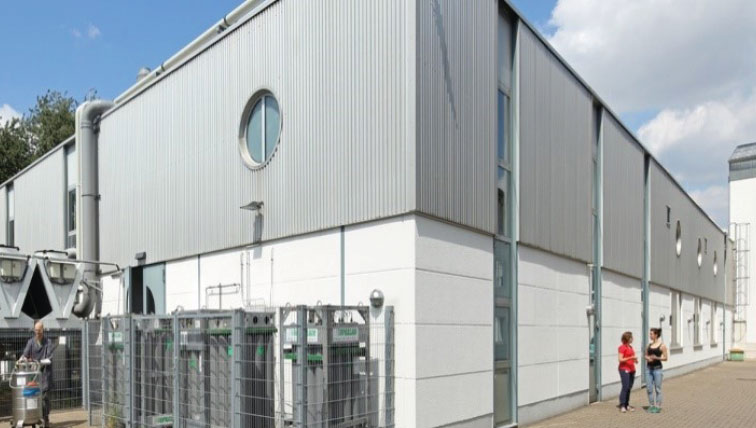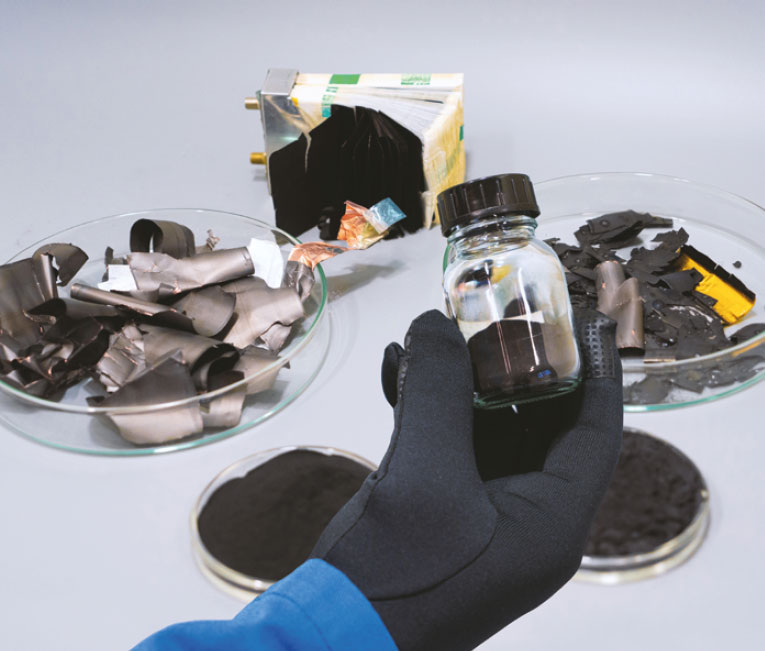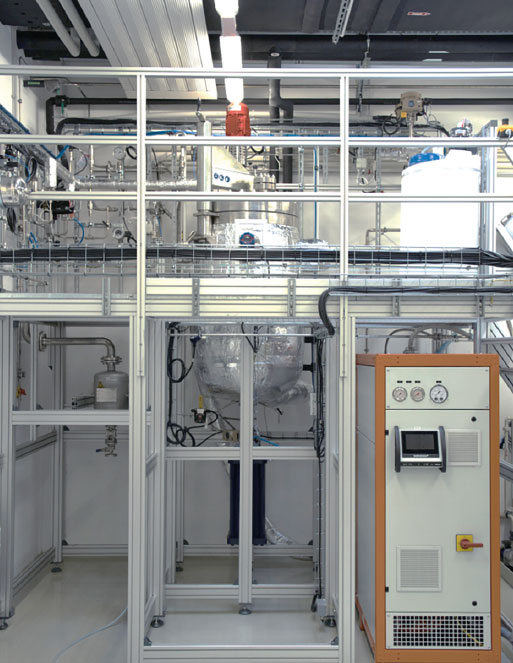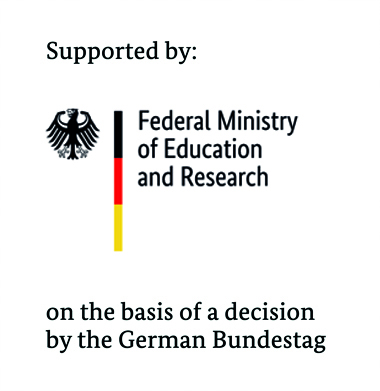
Efficient recycling processes for lithium-ion batteries at Fraunhofer THM
Current research




The Fraunhofer Technology Center High Performance Materials THM in Freiberg/Saxony is a research and transfer platform of the Fraunhofer Institute for Integrated Systems and Device Technology IISB and the Fraunhofer Institute for Ceramic Technologies and Systems IKTS. Together, semiconductor materials as well as energetic materials and their applications are investigated, addressing the complete value chain, from synthesis to process development to recycling. Furthermore, Fraunhofer IKTS cooperates closely with the Institute of Chemical Technology at TU Bergakademie Freiberg (TUBAF).
One research focus of Fraunhofer IKTS in Freiberg is on the life cycle of lithium-ion batteries (LIBs) – from material to electrode production and assembly, and the future recycling of the materials. The work hones in on holistic and integrated solutions tailored to the requirements of the industry, for a closed battery production loop. The battery electrodes are developed using various pilot plants under lab and dry room conditions (TP -60 °C).
In order to provide the amounts of raw materials required to meet the increasing battery demand for e-mobility in the context of sustainability and the circular economy, environmentally friendly and efficient refurbishment and recycling processes for end-of-life batteries are indispensable. In the field of battery recycling, Fraunhofer IKTS therefore concentrates on concepts and technologies with which material and substance cycles can be closed and recovered material can be reused.
Together with the Institute of Chemical Technology of TUBAF, we are investigating how to scale up the alternative COOL process to recover Li selectively from black mass, as part of the project “EarLiMet – Early Stage Metal Recovery for Energy and Resource Efficient Recycling of Li-ion Batteries”. These efforts have shown that 95 % of the lithium can be recovered after leaching with CO2, forming Li2CO3, obtained as a main product in battery-grade quality. Afterwards, valuable raw materials such as cobalt, nickel, manganese and copper remain in the Li-free black mass.
The recovery of these valuable and critical raw materials from the cathode active material (CAM) was investigated within the BMBF project “EVanBatter – Development of a Re-synthesis Route of Active Materials for LIBs that is Robust Against Impurities” (funding no. 03XP0340C). The purpose is to determine tolerable contaminant limits for CAM with aluminum and iron to reduce the purification steps within the entire recycling process, thus contributing not only to the reduction of chemicals but also to process efficiency.
In addition, IKTS is planning further infrastructure development at Fraunhofer THM in order to digitize battery production further and to automate recycling processes to a greater degree.
Supported by

